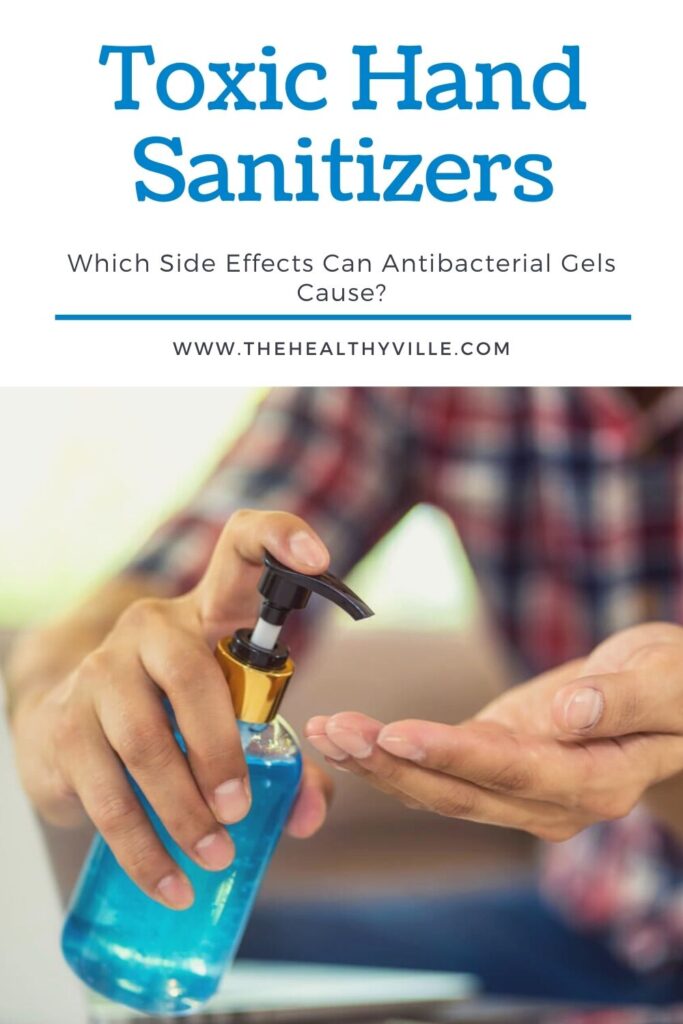Toxic hand sanitizers? Is this possible? Can antibacterial gels we’re using at this point cause problems with our skin? Find out!
At present, the global use of antibacterial gel has increased due to the ease and practicality of the product amid the coronavirus crisis. However, some components can generate unwanted dermatological reactions.
Although thinking about the side effects of antibacterial gel in hand hygiene seems illogical, the truth is that they exist. Despite this, it is an effective and simple method to reduce the transmission of infections in public or healthcare settings.
Alcohol-based hand sanitizers have become a popular and efficient alternative to traditional hand washing with soap and water. They help prevent the spread of bacteria and viruses, making them one of the essential products to reduce the burden of medical care. But are they toxic? Are we using toxic hand sanitizers? Find out!
What is the composition of the antibacterial gel?
A range of disinfectants are available with various combinations of ingredients and modes of administration. Currently, there are 2 large categories for hands on the market:
- Alcohol-free disinfectants – The most common primary active ingredient, benzalkonium chloride, is a quaternary ammonium, a common disinfectant. Also, they are less of a concern with regard to their flammability and potential for abuse. There are variants that contain triclosan, a compound that toiletries and toothpastes also contain.
- Alcohol-based disinfectants: These are less easy to use on the skin and predominate in healthcare settings, due to their low cost and effectiveness in reducing infectious transmission.
Antibacterial hand gels that contain alcohol may include ethanol, isopropyl alcohol, n-propanol, or a combination of these and water, as well as excipients and humectants. Consequently, solutions containing alcohols between 60% and 95% by volume are the most common and effective.
Moisturizers reduce the side effects of the antibacterial gel. In this way you prevent dehydration of the skin. In the same way, the excipients help to stabilize the product, in addition to prolonging the time necessary for the evaporation of the alcohol, thus increasing its bactericidal activity.
Side effects of antibacterial gel with ethanol
Despite the addition of emollients and humectants to modern preparations, ethanol is causes a variety of skin reactions. Irritant contact dermatitis, which can range in intensity from mild to concerning, can present as dryness, irritation, itching, and cracking of the skin.
Similarly, allergic contact dermatitis can also range from mild to severe symptoms. It is sometimes accompanied by respiratory distress in extreme cases.
Although very little has been reported, contact urticaria syndrome has also been associated with the side effects of antibacterial gel with alcohol. It usually presents with swelling, redness, a burning sensation, tingling and itching within minutes.
Side effects of antibacterial gel with triclosan
Triclosan is an antimicrobial that has been incorporated into a variety of consumer products, including soaps, hand sanitizers, toothpaste, and mouthwash. In September 2016, the use of triclosan in soap products was banned following a risk assessment by the US Food and Drug Administration (FDA).
Triclosan is easily absorbed into human skin and oral mucosa. It is found in various human tissues and fluids, as well as being used as a component of pesticides. It causes a hormonal imbalance, allergies and affects the immune system.
Forget toxic hand sanitizers – Wash your hands!
Proper hand hygiene is one of the essential infection control strategies, as the likelihood of direct or indirect transmission of microorganisms can undoubtedly be reduced.
The superiority of hand washing is due to several factors, such as the removal of a broader spectrum of pathogens and chemicals and the removal of the bioburden on dirty limbs. A 2016 systematic review compares historical methods of approaching food safety and specifies that hand washing is ideal.
In fact, suggestions are that hand washing with soap and water is more effective than alternative hand sanitizing methods in removing dirt and microorganisms. Soap and water are superior to disinfectants.
The main thing is washing and hygiene
The use of antibacterial gel is becoming more and more common due to its rapid action and efficiency in killing microorganisms. More precisely, it becomes relevant when washing hands with soap and water is not practical or convenient.
However, there are some situations in which it is preferable to wash your hands. That’s because alcohols are less effective when hands are dirty and cannot cover certain types of pathogens.
It is vital to select the antibacterial gel with the proper amount of alcohol. And, to practice the correct technique when washing your hands. This ensures that you kill all microorganisms effectively.
Don’t forget to SHARE the side effects of toxic hand sanitizers with your friends and family on your social networks!

